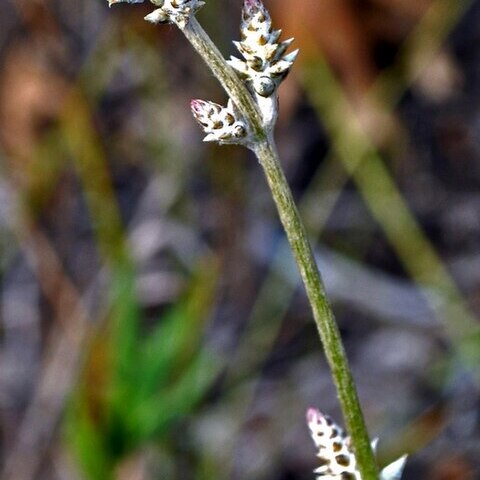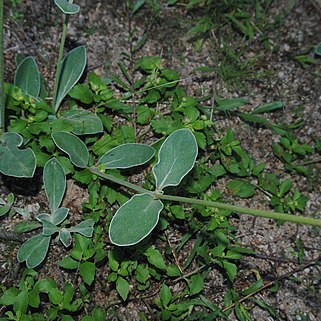Herbs [shrubs], annual or perennial. Stems erect or procumbent, simple to much-branched, sometimes broomlike, usually richly pubescent. Leaves opposite, sessile or short-petiolate, most abundant on proximal 1/2 of plant; blade linear, lanceolate, oblanceolate, oblong, or orbiculate, fulvous abaxially, margins entire, usually pubescent. Inflorescences terminal, erect, pedunculate, spiciform, mostly compound, usually elongate and interrupted, or rounded and headlike; rachis consisting of spirally arranged bracts that adaxially subtend 2 concave imbricate bracteoles enclosing and falling with the flowers, silky or woolly. Flowers bisexual; tepals 5, connate at least to middle into tube; lobes lanceolate to acute; tube 2-lipped, 5-lobed, surpassing bracteoles, lanate, becoming indurate in fruit and developing lateral wings or crests and, in some species, facial tubercles or spines; stamens 5; filaments connate into cylindric to flask-shaped, 5-lobed tube, lobes (pseudostaminodes) with margins entire or shallowly notched, apex blunt to acute; anthers attached at sinuses, 2-locular; ovule 1; style 1, short or elongate, shorter than staminal tube; stigmas sessile, minutely 2-fid to capitate or penicillate. Utricles enclosed by indurate perianth tube, ovoid or flask-shaped, membranaceous, indehiscent. Seeds 1, obovoid or lenticular, germinating while enclosed by perianth tube. x = 8.
More
Fls perfect, each subtended by a scarious bract and 2 bractlets; cal tubular, becoming flask-shaped or conic and indurate in fr, shortly 5-lobed, densely woolly; stamens 5, the filaments united into a tube equaling the cal and suggesting a sympetalous cor, the 5 oblong, bisporangiate and unilocular anthers alternating with 5 ligulate lobes; style slender; stigma capitate; ovule 1; fr a membranous, indehiscent utricle, included in the indurated cal-tube; ours annuals with narrow, opposite lvs and woolly terminal spikes. 20, New World.


